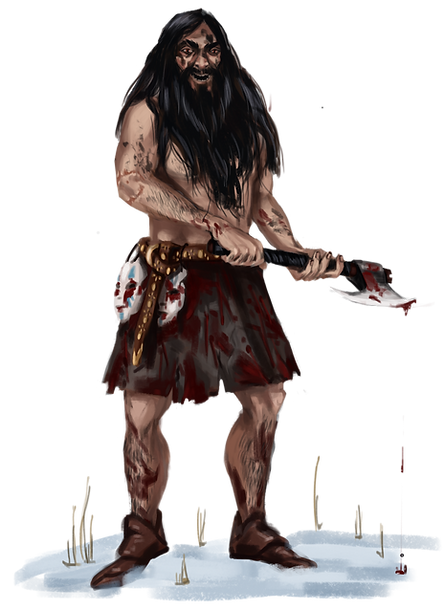
The Land
North-west of the world lies the Kingdom of Nordruna, the first to stand against Osvarii after thousands of years cornered in fear.
Surrounded by mountains and snow-covered forests as far as the eye can see, a great fortress lies in the heart of the Kingdom. Its tall walls, a blend of dark shades, are made of a rare mineral called armagia. Unlike most capitals, it is not a city what surrounds the castle, but small villages and hamlets, all within the protection of the walls.
When Vasarigæ found refuge inside the armagia mines in Nordruna back in year 824, they depleted them to build the castle and the walls protecting their land. This was known as "the hundred-year plan".
Though initially the castle was intended to be a fortress, a leader emerged among the miners and the hundred-year plan became a much more ambitious project: a castle, a refuge for Vasarigæ fleeing from the Osvarii. The plan finally took five hundred years to complete and was finished by other generations. That miner became the first King, Nasgam I, and his lineage has been ruling the land ever since.
The Kingdom of Nordruna has experienced a great growth as of late, all thanks to the efforts and ellaborate strategies of King Volkgam II, ever since he was crowned in 3133.
Osvarii have very little intel on what goes on behind those armagia walls.


The Kingdom of Nordruna
Illustration by Cristina de Elías
The Folk
Nordrunans are often mistaken for giants or semi-giants. They are large, generally muscular and speak in grunts if at all. Though not very versed in the art of reading or learning in general, a select few do have access to books, arts and treasure obtained in raids within Osvarian territory.
The Vasarigæ who first emigrated there were woodworkers, craftsmen and warriors. Though miners also played a key role in building the Kingdom, only the axe and the hammer are depicted in the banner. This was a direct order from the first king, Nasgam I. Even though he was a miner before he was king, he expressly forbade any reference to the miners on the banner, with the sole exception of the purple colour: the colour of armagia.
Northern vasarigæ are very protective of their land and will not hesitate to use brute force against any threats. Under the tactical mind of King Volkgam II, their hunts, raids and skirmishes against osvarii have been successful with more gains than losses.
Nordrunans have been spreading the news to other vasarigæ scattered across the world, encouraging them to join King Volkgam II's fight against mahrym users, the Osvarii. Though many have joined the cause, they fall very short in numbers compared to how extended the Osvarian population is, including all of its races.
Nordrunan craftsmen are versed in the art of forging weaponry and armours, and are well-known for having created the Brakvos, or mask-ripper, feared by all Osvarii.

King Volkgam II
Illustration by Cristina de Elías

The Winter Feast
Illustration by Lauma Sliņķe
The Winter Hunt
Although winter doesn’t make much of a difference to Nodrunans, they do celebrate the coming of the season as a reminder of the union of the northern Vasarigan lands under King Volkgam II's watchful eye.
Warriors all over Nordruna will join a hunt against an enemy territory chosen by the King, who will of course be leading the hunt. Those unable to join in battle will put their skills and homes at the warriors' service, and these will be allowed to sleep and eat at any home or inn.
After the hunt, the warriors will feast in the capital and share their earnings with their families.
Those who have fetched the most bone masks from dead Osvarii will earn a right to part of the raided territory, which will then be repopulated.
The lands that have suffered the most from these hunts are the northern region of Arnwell and Tarkhia.
Collecting Osvarii Masks
Nordrunans have a practice of ripping the bone faces of Osvarii off. They have perfected the technique to the point they can do so in the middle of the battlefield, quickly and efficiently, while keeping the Osvari in question alive.
While folk from other Vasarigan kingdoms view this as savage, Nordrunans consider it necessary to ensure the Osvari's mahrym won't be released and inherited by another Osvari.
It's common to find Nordrunans boasting Osvarii bone masks around their neck, hanging from their belt, or even decorating the walls of their house. King Volkgam II was the first to instill such practice, a reminder that Osvarii are no longer almighty without the bone growing on their face. And a way to frighten those who face them on the battlefield.

A Mask Collector
Illustration by Lauma Sliņķe
Music
_edited_j.jpg)

